At H&M Group we are using tech to drive positive change commercially, environmentally, and socially. We always look for ways to innovate and explore new opportunities in the world of fashion. This is how virtual fashion is becoming a (virtual) reality for us.
Our stories
A virtual reality at H&M Group
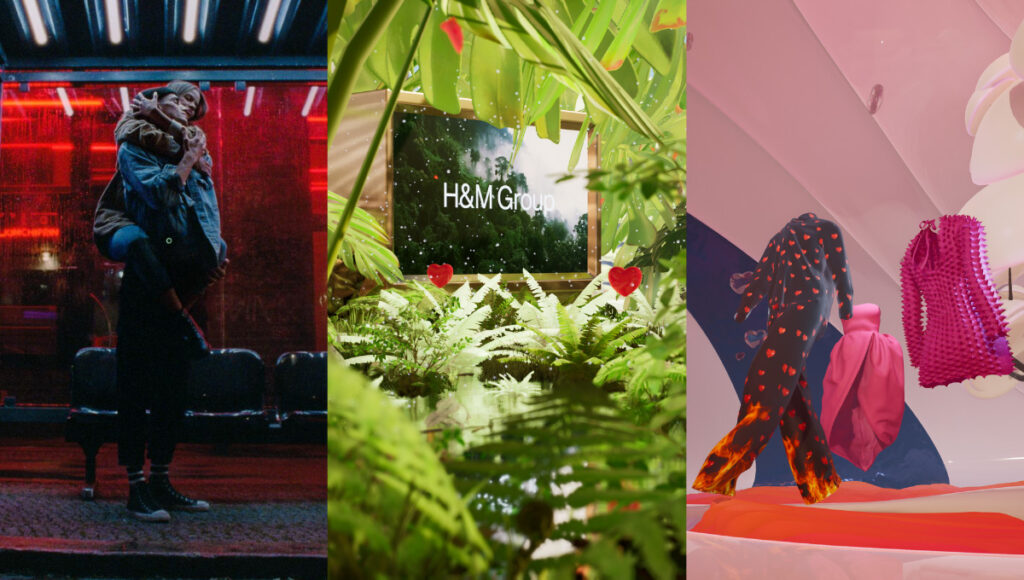
This month, H&M opened its digital doors to its first-ever virtual showroom, in connection with the launch of the Innovation Story Cherish Waste Collection. Inside the virtual showroom, press and media could walk around, talk to other guests, and view the virtual collection, which was showcased as high-quality visuals — photo-realistic 3D rendered cloth materials and garments animated to simulate the movement of the cutting-edge materials.
Our first virtual showroom
The convergence of our physical and digital lives has become known as the metaverse, an omnipresent buzzword and hyped as the “holy grail of online social experiences”. In the hyper-realistic metaverse, the Internet is no longer separate from one’s “real” life. Instead, our lives are moving into the digital world, and for the fashion industry, the virtual sphere offers new ways to bring to life new collections and campaigns.
For H&M, with stores in 76 markets, this pioneering virtual environment has both built and maintained relationships with media, celebrities, influencers, and stylists, as an extension of physical showrooms located all over the world. A virtual showroom allows guests to experience new campaigns at any time — without physically traveling. It also offers the possibility of hosting events to a larger audience.
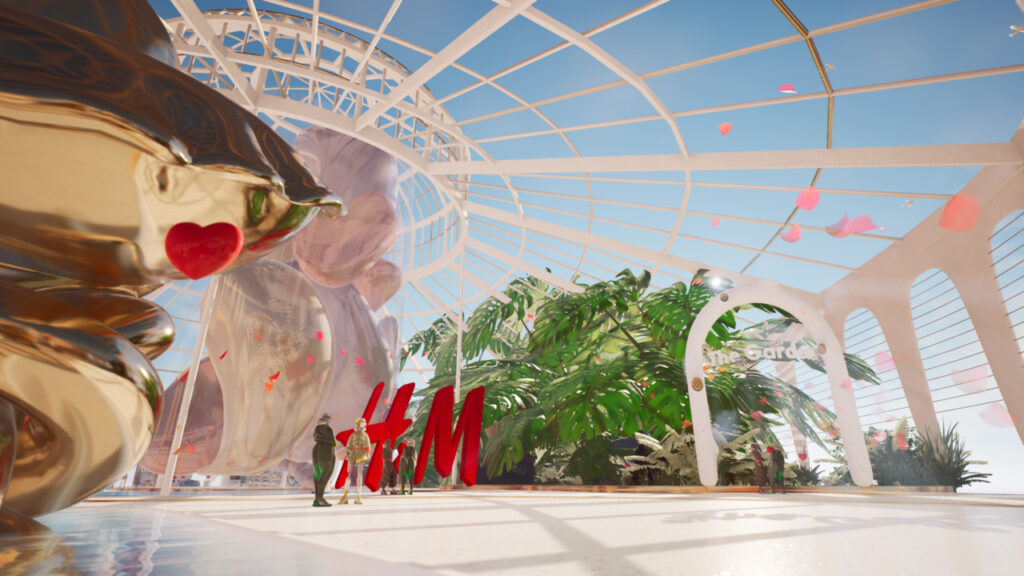
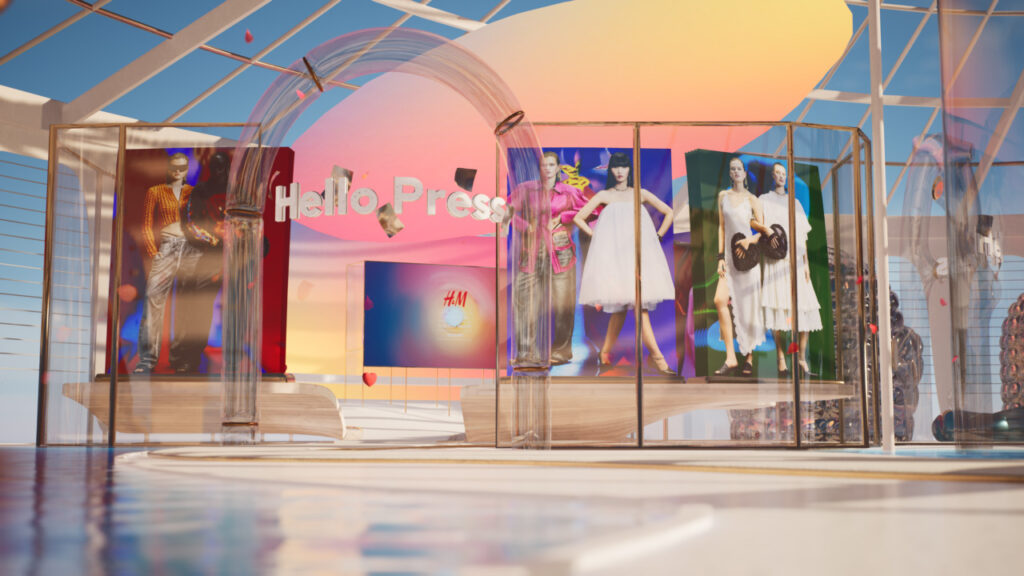
This month, H&M opened its digital doors to its first-ever virtual showroom, in connection with the launch of the Innovation Story Cherish Waste Collection.
“The H&M virtual showroom is designed to be a space for brand activations such as fashion campaigns. They will be brought to life in a whole new and exciting way, by integrating innovation, digitalisation and sustainability. We look forward to exploring its potential in the countries in Region Central Europe (where the showroom is a pilot, editor’s note) and beyond in the future”, says Thorsten Mindermann, Regional Manager H&M Central Europe.

A virtual showroom allows guests to experience new campaigns at any time — without physically traveling.
How to get dressed in the metaverse
For H&M, it’s not the first time they have tapped into the virtual world. In January 2022, H&M launched its first virtual garments: A collection displayed through a competition where participants could submit playful, fun, innovative names for the available looks. The virtual looks were only available as a prize for the competition — they were not physically produced or sold in stores. To “wear” the pieces, the winners sent in a photo of themselves, and 3D graphic designers styled them in the digital look as an animated image, which then was ready to be posted to social media.

Virtual fashion takes personal expression beyond physical limits — it is now possible to wear impossible materials. Here actor Maisie Williams (top) is an avatar in a video game on the H&M Looop island (2021), and (below) in the H&M Divided Virtual competition (2022).
New technology allows us to engage even more with our customers, so we can be more creative and fun. Digital fashion includes everything traditional fashion offers—from T-shirts to ball gowns—but these pieces are not physically manufactured, or tangible in any way.
Instead, garments are created using 3D and animation design software. Individuals “wear” digital clothing through gaming avatars, augmented reality (AR), or digitally edited photos.
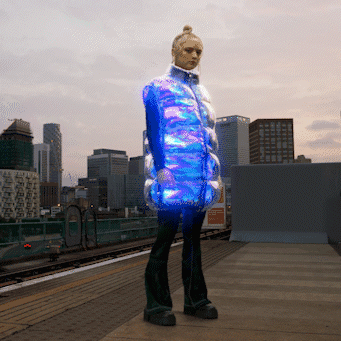
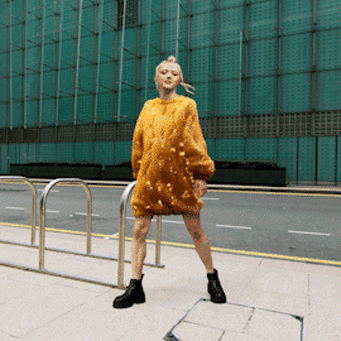

Virtual fashion as self-expression — for everyone
Just as an outfit in the physical world is a representation of who we are, or how we feel, virtual fashion allows us to dress our digital selves, or avatars, as an extension of, or in total contrast to, ourselves. On gaming platforms players can purchase custom outfits, or “skins”, digitally layered on to their avatars to wear during gameplay.
Likewise, AR technology in Snapchat or Instagram features allows users to accessorise and style their digital presence through filters–trying on a flower crown, wearing bunny ears, or dying their hair rainbow colours.
“Virtual apparel makes fashion wearable for all bodies. Garments in the virtual world are not limited by size because virtual fashion has no size. Every garment is custom fit. Regardless of size, shape, or gender, digital garments are size inclusive and tailored for all body types”, says Ann-Sofie Johansson, Creative Advisor, H&M.
Moreover, the possibilities of self-expression that come with virtual fashion are endless. Styling limitations of the physical world are no longer constraints in the imaginative, playful metaverse, and offer the chance to wear clothing made from impractical or impossible materials, such as liquids, electricity, ice cream, clouds, or digital materials, such as AI-generated patterns.
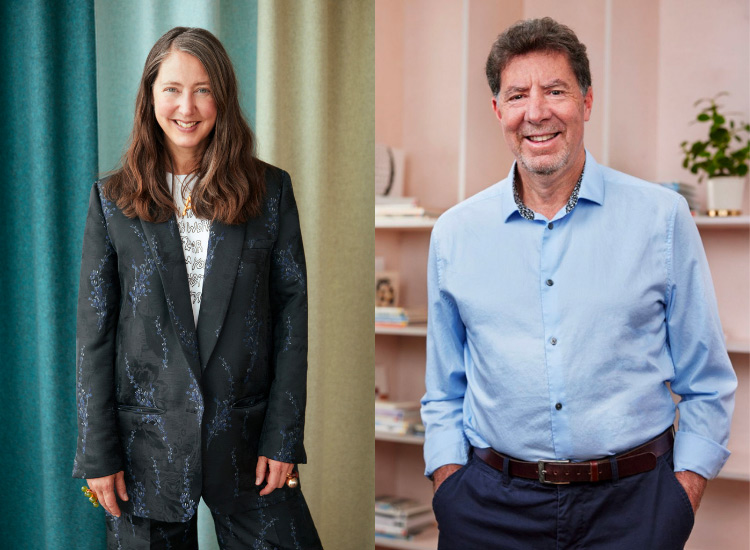
Ann-Sofie Johansson, Creative Advisor, H&M, and Alan Boehme, Chief Technology Officer, H&M Group
“We see virtual fashion and the metaverse as another way to democratise fashion. Our brands aim to offer fashion and quality at the best price around the world in a sustainable way. In the virtual world, we are not limited by the same constraints as in the physical world”, says Alan Boehme, Chief Technology Officer, H&M Group, keynote speaker at the Web Summit 2021 conference.
“Customers can be anywhere in the world and access the most exciting, up-and-coming fashion trends such as an exclusive couture ball gown or a celebrity collab collection that are usually created in limited quantities or sold in specific target markets. This gives all customers a fair chance to access inspiring fashion. Moving towards the future, H&M Group will continue to explore the field of virtual fashion, as another way to meet our customers when, how and where they are”, Boehme says.
What’s next for virtual fashion?
Digital garments open new creative possibilities for co-creation with customers. In the future, shoppers will be the designer — able to select the style, fit, material, colours, and more so they can create an entirely customised, personalised wardrobe with new fashion concepts in ways not yet discovered today. Retailers may also create three-dimensional shopping experiences in a virtual store. Customers can purchase items to wear in digital environments or order the same items as physical garments to wear in “real” life.
Individuals can showcase their virtual looks fashion on social media (e.g., Tiktok, Snapchat, Instagram, etc.), but also at work on video calls or during online conferences, in video games with metaverse worlds, and other multiverses.

The Wearable Tech Collection x H&M LAB (2020) showcased an innovative technology integrated into the garment — here a classic denim jacket.
Integrating technology into physical garments, “wearables”, is another venture the retail and fashion industry continues to explore for the future. Beginning with the campaign Wearable Tech Collection x H&M LAB in August 2020, H&M tested the market potential for wearables. The campaign involved a classic denim jacket that connects the people with their loved ones even when they are physically separated, with built-in sensors in the shoulder area, that mimic a hug, and in the pocket, to imitate the feeling of holding hands. Users connected via an app, and signals were transferred to the jacket as a touch.
Selected virtual fashion initiatives
- H&M Virtual showroom, in connection with the launch of the Innovation Story Cherish Waste Collection in April 2022. The showroom is a pilot made by H&Mbeyond., i.e. H&M’s innovation retail lab based in Berlin.
- H&M Divided Virtual competition with three animated digital looks supported by a campaign, in January 2022. The initiative was fronted by actor Maisie Williams, H&M Global Sustainability Ambassador for 2021 and known for being an active voice for female empowerment, sustainability in fashion, and diversity in the arts.
- H&M Innovation Metaverse event, in connection to the launch of the Circular Design Story collection, in November 2021. H&M Spain celebrated the launch of the Innovation Circular Design Story collection, in November 2021, by hosting an exclusive event experience called H&M Innovation Metaverse. The entire collection was recreated in 3D and guests could step into H&M’s metaverse and discover the new collection by creating their digital avatars dressed in designs from the collection.
- H&M vegan collection Co-Exist Story on the Nintendo game Animal crossing: New Horizons, in November 2021. H&M dropped its first vegan, PETA-approved collection for the Nintendo game, Animal Crossing: New Horizons. Eleven pieces from the Co-Exist Story collection were recreated in virtual form for gamers to download to wear during in-game play. The game also includes the H&M-created Looop Island (the name derives from H&M’s real innovative garment recycling machine Looop, which disassembles old garments and assembles them into new ones). The island was designed with sustainability in focus and players can recycle their game outfits into new ones virtually and meet with actor and H&M Global Sustainability Ambassador for 2021, Maisie William’s avatar.

H&M vegan collection Co-Exist story, showcased in the video game Animal crossing: New Horizons (2021).
- Wearable Tech Collection x H&M LAB, in August 2020. H&M LAB Germany (now called H&Mbeyond., editor’s note) has developed a technology that uses fashion to transmit emotions. With the innovative technology integrated into the garment — in this case, a classic denim jacket — people can touch each other even when they are physically separated. How? Flexible sensors and tactile elements were incorporated into the garment, users then connected via an app, and signals were transferred to the jacket as a touch. The campaign Wearable Love was launched to test the market potential.
- The Sims 2 Fashion Stuff Pack, in June 2007, was a collaboration between H&M and Electronic Arts (EA). The stuff pack contained replicas of garments, all inspired by H&M’s 2007 summer collection. The Sims 2 players could also create an H&M store and style it with mannequins, clothing racks, cash registers, fitting rooms, and more.
The buzzwords to know
- Artificial intelligence (AI): Utilises computers, machines, and data to mimic problem-solving and decision-making capabilities of the human mind.
- Augmented reality (AR): Technology that allows real-world images to be enhanced and modified digitally — combining the virtual world with the real world by overlaying one on the other.
- Avatar: Personalised graphic illustration, or digital representation of a user, or the user’s character or persona, custom-designed to create a truly unique appearance in gaming and online communities/platforms.
- Blockchain: A digital accounting or ledger system that cannot be manipulated, changed, or tampered with, its recorded history lasts forever.
- Cryptocurrency: Digital currency monitored and organised by blockchain — it only exists online. One example of cryptocurrency is Bitcoin.
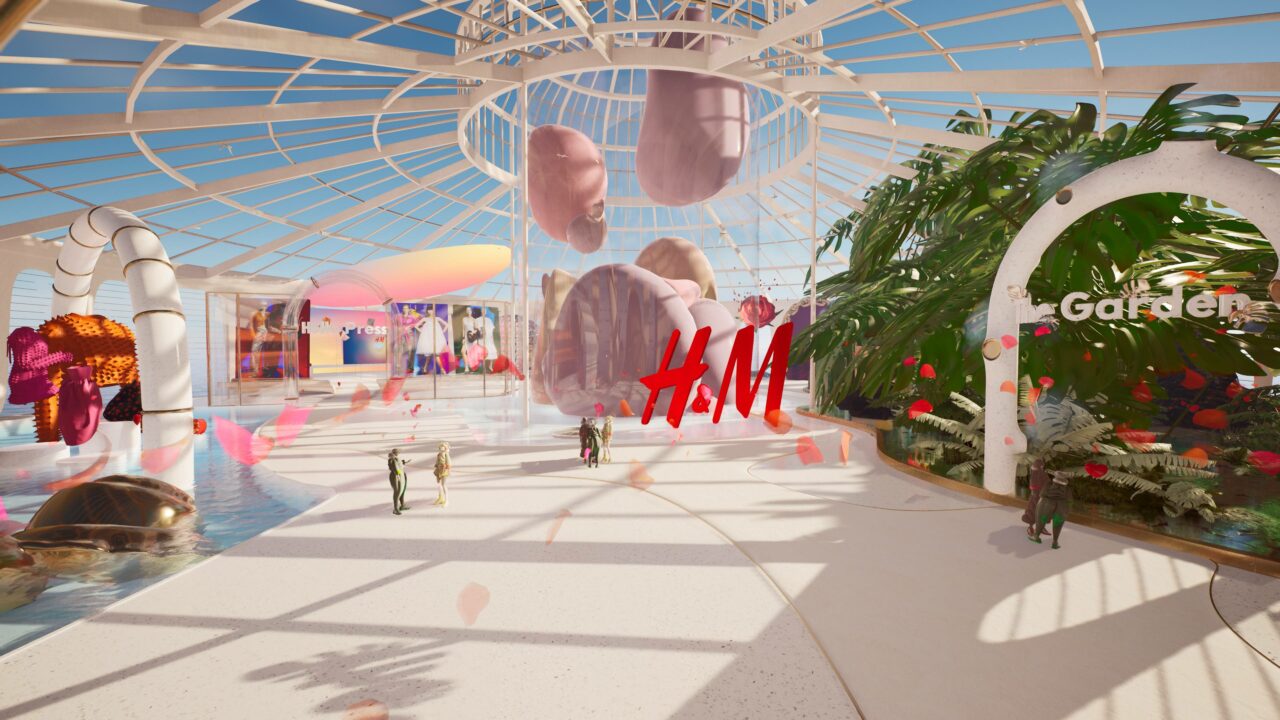
H&M Group uses tech to drive positive change commercially, environmentally, and socially.
- Metaverse: A combination of multiple elements of technology, including virtual reality, augmented reality, and video where users “live” within a digital universe. Supporters of the metaverse envision its users working, playing, and staying connected with friends through everything from concerts and conferences to virtual trips around the world.
- NFTs (non-fungible tokens): Blockchain-based records, or receipts, that confirm ownership of pieces of digital media. The piece of media is then verified by the NFT as the original, therefore, one-of-a-kind. The media can be anything in a digital format, including art, photos, videos, music, and even limited-edition digital garments.
- Virtual fashion: Garments that exist only virtually and can be worn only in the digital world. This makes it possible to wear impossible materials, such as liquids, electricity, ice cream, clouds, or digital materials, like AI-generated patterns. Garments or outfits are called skins.


